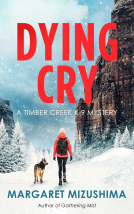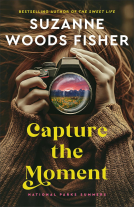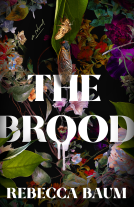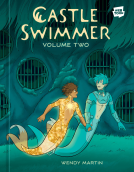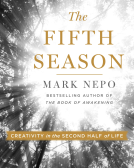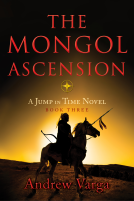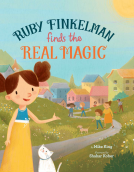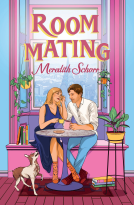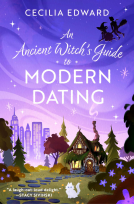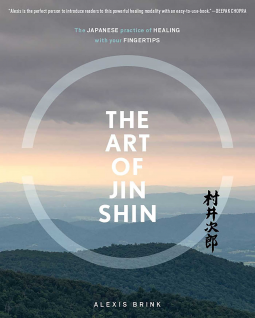
The Art of Jin Shin
The Japanese Practice of Healing with Your Fingertips
by Alexis Brink
This title was previously available on NetGalley and is now archived.
Send NetGalley books directly to your Kindle or Kindle app
1
To read on a Kindle or Kindle app, please add kindle@netgalley.com as an approved email address to receive files in your Amazon account. Click here for step-by-step instructions.
2
Also find your Kindle email address within your Amazon account, and enter it here.
Pub Date Jun 25 2019 | Archive Date Jul 09 2019
Tiller Press | S&S/Simon Element
Talking about this book? Use #TheArtOfJinShin #NetGalley. More hashtag tips!
Description
You might be surprised to learn that the majority of today’s most common ailments including anxiety, backaches, colds and flu, digestive issues, immune disorders, migraines, and insomnia, can be alleviated naturally by restoring and harmonizing blocked, stagnant energy. The art of Jin Shin, based on the Japanese healing art of energy medicine, is practiced throughout the world. While related to acupressure and massage therapy, this holistic practice uses only minimal pressure and gentle touching with the fingers and hands to redirect or unblock the flow of energy along the body’s fifty-two points (twenty-six on each side of the body)—called Safety Energy Locations, or SELs—areas where energy tends to get congested. This simple, non-invasive process allows your body’s energy to flow smoothly, and with balance restored, you will experience a sense of wellbeing and calm.
The Art of Jin Shin explains all the basics of this healing art and provides you with the knowledge you need to practice it on yourself—with exercises ranging from simply holding a finger for a few minutes to spending twenty minutes to harmonize a specific circulation pattern. Whether you desire a deeper understanding of the body/mind/spirit connection or want to create a daily Jin Shin maintenance routine the power is literally at your fingertips.
Available Editions
| EDITION | Other Format |
| ISBN | 9781982130930 |
| PRICE | $22.99 (USD) |
| PAGES | 240 |
Featured Reviews
Jin Shin is an interesting practice and I cannot wait to try more of the practices here, and work on my breathing.
The author chose a more practical approach, using simple language in writing and pictures which guide the reader on the steps to take and where to influence for the release of pent up energies or help in redistribution of energy.
Thanks Netgalley for the eARC.
 Deborah W, Reviewer
Deborah W, Reviewer
This book explains how The Art of Jin Shin works (gentle touches and some deep breathing) and some positions that a person can do on themselves to help with things like headaches, a cold, insomnia, dizziness, stomach aches, etc. The author started with a basic introduction to and history of the Art of Jin Shin. While Jin Shin can be applied to others, the focus of this book is how to apply it to your own body. The author provided an overview of how to do the technique and where the points you will touch are located on the body. She talked about some short routines to do for everyday care, organ flow routines, and positions to use for specific problems. There were pictures of people doing each position, so you can see clearly were to touch. She's a little less clear on how long to hold a position as that seems variable and dependent on being able to feel when the energy becomes unstuck.
Many of the positions quickly get tiring to hold, so I'm not sure if I'm doing them long enough. Also, some positions (especially in the organ flow routines) require a flexible body to touch the two spots at the same time. Due to my rheumatoid arthritis, I'm not flexible enough to do most of the holds for the organ flows nor the one for autoimmune conditions, though I can do the arthritis hold for a short length of time. Does it work? I haven't seen any improvements in my RA, but it did seem to work quite quickly on a mild head that I had. I'll keep trying it for a while since you can't hurt yourself by doing it. Anyway, if you're interested in The Art of Jin Shin, this book will get you started in applying it to yourself. I was left with some questions after finishing the book, but they weren't the sort that would prevent me from using the holds in the book.
I was so excited to see a brand new book on the energy work I learned years ago called Jin Shin Jyutsu®. Since then, the Jin Shin Institute has updated to use the English word "art" in the name rather than "jyutsu" which is usually confused with "jitsu" and martial arts. Now western practitioners are allowed to say "Jin Shin" or "the art of Jin Shin". I love my original texts -- spiral bound books with Mary Burmeister's drawings and my own notes filling every space. I would have loved an additional text like this one by Alexis Brink back then.
Brink includes the history of Jin Shin as founded by Jiro Murai. It follows the motivation he had in finding a cure for his ailing body. He then taught two students, Dr. Haruki Kato and Mary Burmeister. Kato continued the teachings in the far east while Burmeister took this new art to the western world. It's from there that Americans had become familiar with it. One of Burmeister's students was Philomena Dooley and thus began New Jersey's branch of training in this art. Practitioners like myself have studied at Morristown Memorial Hospital.
When it comes to Brink's passion, there's no doubt whatsoever that she believes in the miracles of Jin Shin. My only criticism of this book is that there are no cautions about seeing medical doctors to compliment the treatments. Brink even talks about clients who had given up their medications after a week or two of sessions. I love complimentary medicine as much as the next person, but I think it's a bit irresponsible to highlight people going cold turkey off their prescriptions. Some may have great success while others may be in life threatening danger.
There is plenty that's fantastic about Brink's book. She repeats that there's no wrong to do this art. There are instructions throughout the bulk of the book, but if you become a person who likes self-care in Jin Shin, you aren't going to cause yourself any harm if you place your right hand where the book says to place your left hand. The body is filled with all these safety energy locations (SELs) and missing one step or confusing it, won't be detrimental. Those SELs are explained perfectly in the book whereas my old spiral books have my handwriting in every spare margin.
The Art of Jin Shin also explains the importance of breathing with 36 divine breaths which Brink says should be a daily practice for everyone. If you've taken yoga, you've probably heard of pranayama, the yoga of breathing. In Jin Shin, they start every session or training with this conscious breathing exercise. Brink created this book more specifically to be used for self-care than to use to work on others although one could certainly could figure it out. The models in the photos are shown in the self-care variation. This brings me to another point that I appreciated about the book: diverse models of all ages and ethnicities. Again, Jin Shin is fantastic for self-care and it's how it was discovered in the first place.
Self-care using the fingers -- this is one of the easiest approaches to working with Jin Shin's energy centers and their meridian pathways. It was Mary Burmeister who is credited with contributing the emotional attitudes assigned to each finger and the hands. For example, stomach and spleen energies are in the thumb which also correlates to worry. Each finger has an emotional resonance and a pair of meridian pathways.
There are flows (placement of your hands on SELs in a sequence) and easy instructions. Some flows are more complicated than others. The SELs are numbered and named. The names are so lovely and can give someone a simplistic idea of why they would want to rest their hand on that particular spot. For example, SEL no. 11 is called "Unloading." It's located at the top of each shoulder where the neck begins to curve (upper trapezius). This, as you may know, is a common place where people are tense and knotted with signs of burdens -- things they need to "unload." If you're ever unsure, you can find one of the first three flows that would work well. They also have colorful names: the Main Source flow, the Supervisor flow, and the Mediator flow.
The afterword by Karen Duffy more closely reflects what I would have liked from the author Alexis Brink in that Duffy openly discusses her personal medical history with two devastating chronic illnesses. She doesn't stop her western medical therapies. She uses Jin Shin as self-care in addition to her western regime of doctors, scans, and medicines. Brink has a lot of responsibility now as the head of the Jin Shin Institute in New York. She is carrying the torch of the art and how its taught to others.
To summarize, I loved The Art of Jin Shin and wished I had had it when I was going to training sessions in Morristown. Having this book as an additional resource will be helpful for me especially having the electronic version in my Kindle. I'm already carrying three bags around when I teach a yoga class. I don't need more books in that physical burden. I'm not anti-hardcopy by any means. I love if I can make notes and stick flags through a book too. It's just that the way I would incorporate Jin Shin into my classes, having the ebook makes it a little easier.
The Art of Hun Shun is a interesting and enlightening book. It is well written and easy to understand. Have a open mind when reading this book.
 Lora M, Reviewer
Lora M, Reviewer
Jin Shin Do ("The Way of the Compassionate Spirit") is a therapeutic acupressure technique developed by psychotherapist Iona Marsaa Teeguarden, beginning in the 1970s.
I had never heard of it before seeing this book so I have no basis of comparison, but I found the instructions easy to follow with interesting results. It's considered alternative medicine and is based on ancient Japanese techniques.
The soothing, full color photographs of natural settings throughout the book have a calming effect and the first hand account by the author in the introduction gives the method clear context. It's an energy manipulation technique and can be used to treat both physical and psychological problems. Like all 'natural medicine', it is not a substitute for a doctor's care, but anything that helps relieve symptoms is worth knowing about in my opinion.
The first part of the book tells about some case studies with seemingly remarkable results. I'm always a little sceptical of these, not in that I don't believe they happen but in that I wonder how much of the recovery is psychological. But I keep an open mind until I try something like this for myself. There is a lot of anecdote followed by a reminder that this is a beginning book to teach how to deal with relatively easy conditions.
Instructive photographs and diagrams are very clear and detailed instructions about exactly how to practice the method couldn't be easier. Some methodology will be familiar to those who have practiced any form of Yoga or martial arts, such as breathing techniques and philosophy of the body's channels.
The sections that explain the flows may not be as familiar. It's worth reading these and maybe reading them again, tempting as it is to jump to the instructions for treating specific ailments. A symptom encyclopedia covering much of the second half of the book makes for easy reference and is alphabetical from allergies and anger to well-being.
I don't suffer from any chronic health conditions so I haven't been able to really test the ideas here, but next time I have a cold or hiccups or anything covered in the symptoms provided I will definitely be trying it! Testing out some of the holds, I could swear I did feel something. I keep an open mind. Either way, the book is well-presented and clear so it deserves a high rating.
 Crystal F, Reviewer
Crystal F, Reviewer
I'm always skeptical of books that claim that they've found the cure all for all ailments. I'm still somewhat skeptical of the benefits of Jin Shin (I felt no different after practicing than I do after doing yoga or even a good walk), but it is a rather interesting practice which I'm sure would help some be able to better center themselves and find peace. The photos are beautiful also.
Useful and filled with details that help the reader start a daily, basic self-care routine. Will keep an eye in this healing method for sure!
Subtitled, ‘The Japanese Practice of Healing with Your Fingertips’, this book gives a brief history of this ‘energy medicine’, followed by several long lists of different holds for different conditions.
The basic premise is something along the lines of: by holding two points on the body, we can ‘release’ the energy flow within ourselves (or others), thus aiding all manner of afflictions, from insomnia to headaches, stress to digestive issues.
I was very impressed with the attitude here: it’s not given as an alternative to seeing your doctor, merely an additional process that may prove helpful. And to be honest, while I’m relatively open to such ideas, my hunch is that the usefulness of Jin Shin is less about which finger you’re holding and more that the breathing and focus is actually meditation. Still, any meditation practice can benefit from a focus, and this is a pretty interesting one.
The other message that I agree with wholeheartedly is that nothing here can hurt you – well, unless you twist something trying to hold on to your ankle, of course 😉 So yes, I was more than up for giving this a go. I’m not sure any of my attempts particularly solved the issue in question, except perhaps holding the back of my neck for an ache – but, the warmth of my hand probably didn’t hurt. As I say, I think the meditation effect was beneficial. Still, I see more likelihood of finding this useful than its more famous cousin, Reiki.
My main complaint here would be that the book in e-format wasn’t the easiest to navigate. If I have a specific problem I’d like to try to address, figuring out where to go is awkward. So, if you fancy giving it a go, the physical book is probably better.
Overall: an interesting concept, and as there’s no harm in trying it out than why not? If nothing else, you’ll benefit from a quiet moment of breathing and relaxation, and a little time spent with your own body is never a bad idea.
 Priya J, Reviewer
Priya J, Reviewer
3.5 stars
The book gives a detailed overview of the art of jin shin, which I was completely unaware of. It is a bit like acupressure but the pressure here is gentle. The book is written mainly for self practitioners. One can find the flow they would like to practice and using the detailed directions in the book, can start with regular practice. Although the text was accompanied by a lot of pictures and a lot of flows, mini flows and mudras were covered in the book, I would still like to attend a workshop to actually get to practice with an instructor before starting myself. But that's just me. Maybe it's my laziness speaking. Maybe I will get to self-practice without a workshop soon.
In any case, if this practice is something you haven't heard of before and want to start exploring, this is an EXCELLENT book to start with. It is detailed and has pictures.
I received a free copy of this book from NetGalley.
Readers who liked this book also liked:
Paloma Angelina Lopez
Children's Fiction, Multicultural Interest, Religion & Spirituality
Jennifer Chiaverini
General Fiction (Adult), Parenting & Families, Women's Fiction



